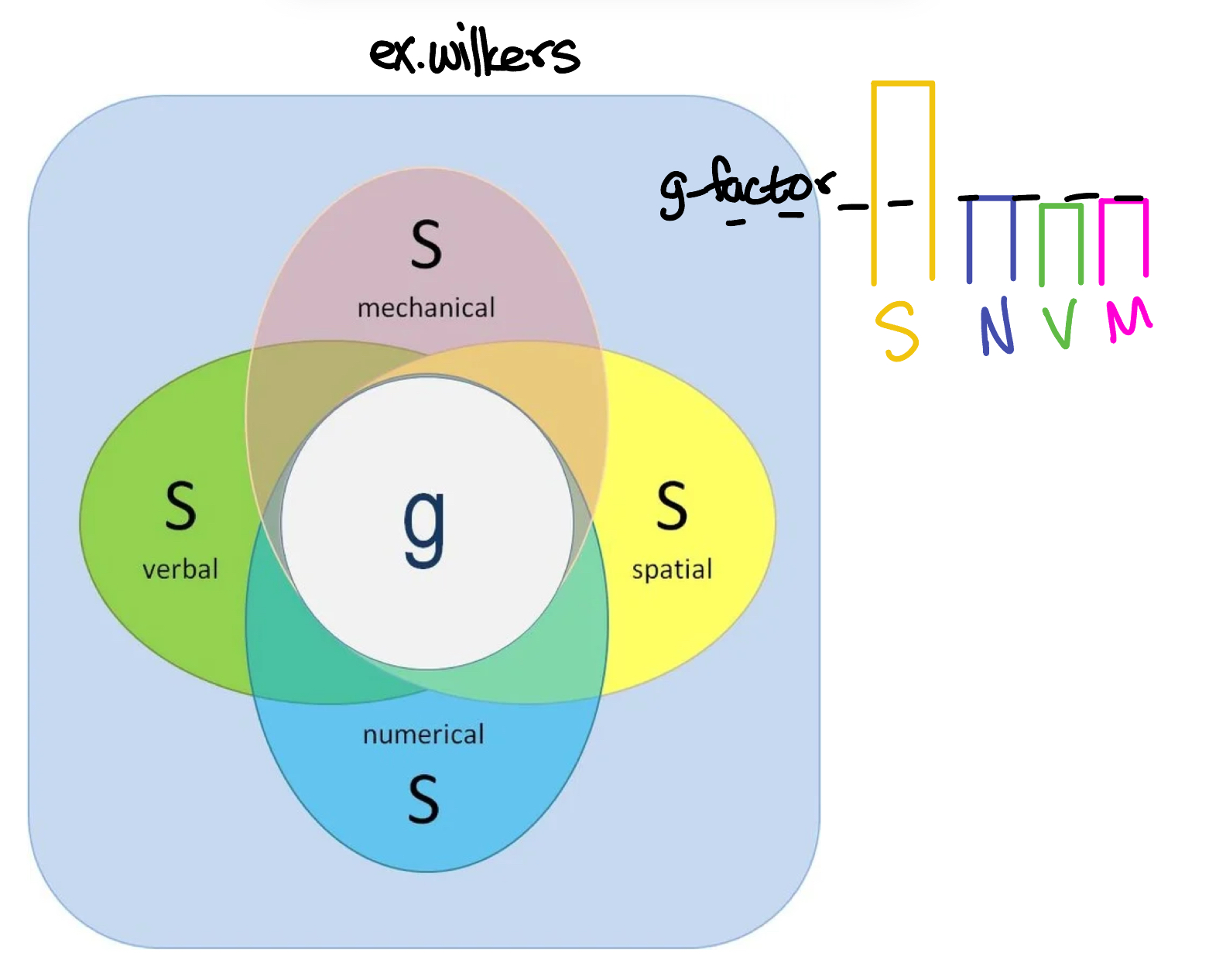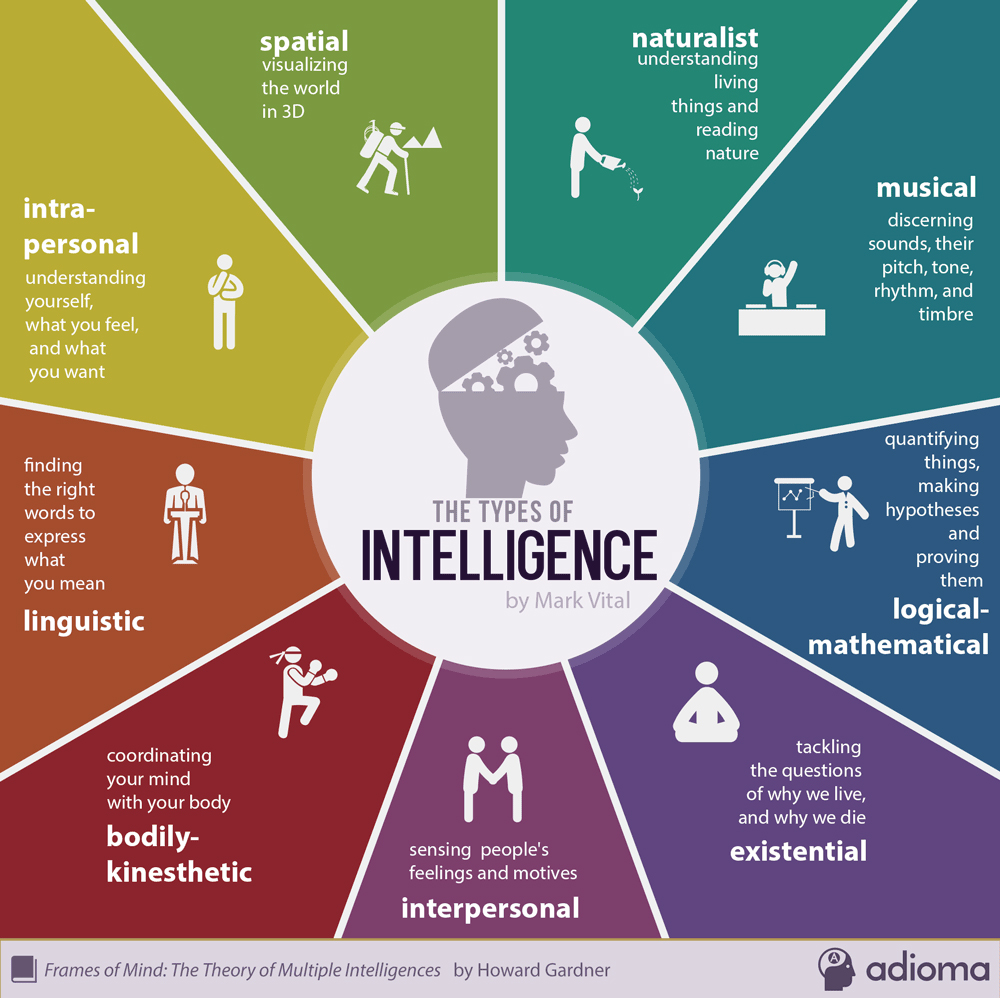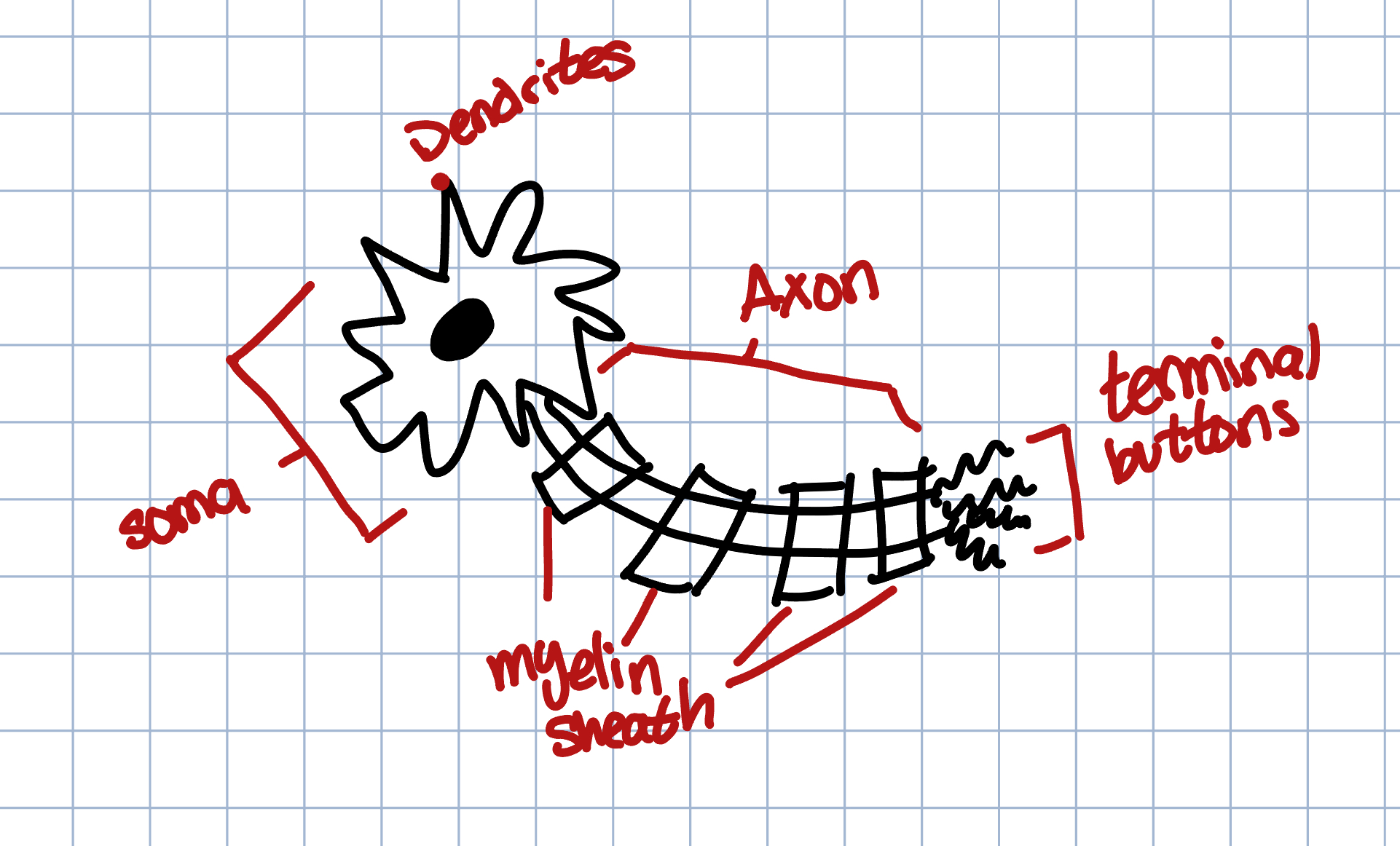Unit 4: Testing & Individual Differences
Intelligence → the ability to gather and use information in productive ways
What is Intelligence? →
“Intelligence war” (Myers, 2011)
2 camps
“generalists”
“multiples”
Generalists →
Charles Spearman → general intelligence
Factor Analysis (g)
Specific Intelligence (f)
if you were intelligent you would have a high g-factor

Howard Gardner
Multiples

Interpersonal → sensing people’s feelings and motives
Bodily-kinesthetic → coordinating your mind with your body
Linguistic → finding the right words to express what you mean
Intra-personal → understanding yourself, what you feel, and what you want
Spatial → visualizing the world in 3D
Naturalistic → understanding living things and reading nature
Musical → discerning sounds, their pitch, tone, rhythm, and timbre
Logical-mathematical → quantifying things, making hypotheses and proving them
Existential → tackling the questions of why we live, and why we die
Robert Sternberg
Triarchic Theory of Intelligence
1) Analytic → mental steps or “components” used to solve problems
2) Practical → ability to read and adapt to the contexts of everyday life
3) Creative → use of experience in ways that foster insight
Daniel Goleman
Book called Emotional Intelligence: Why it can matter more than IQ
EQ→ emotional intelligence
Closlet related to intrapersonal and interpersonal from Gardner
IQ doesn’t = success
5 elements of emotianal intelligence
self-awarness
self-regulation
motivation
intrinsic motivation → something within you is motivating you
extrinsic motivation → external things are motivatinf you
empathy
social skills
Nature v Nuture
Is intelligence genetic or enviornmental
experience does change your brain

What contributions did Alfred Binet make to intelligence research and/or testing?
contracted by the french government to test children
school is not organized or required
created the first intelligence test → Binet-Simon Scale
Binet was a harsh critic of the peopl who thought it was ok to categorize children based off of a single measure
Binet stressed the limitations of the est because he beleived that it was too broad of a concept to quantify with a single number
starts the modern intelligence-testing movement
What contributions did Lewis Terman make to intelligence research and/or testing?
inspired by Binet to create the Stanford-Binet test
named this because he worked at Stanford and based his work off of Binet
(Mental Age/ Actual Age) x 100 = IQ
IQ = Intelligence Quotient
What are the characteristics of how Psychologists measure intelligence?
Most widely used test(“gold standard”)
Weschler Adult Intelligence Scale (WAIS)
17 and older
Weschler Intelligence Scale for Children (WISC)
age 6-16
Weschler Preschool and Primary Scale of Intelligence (WPPSI)
age 4-5
Tests Verbal Domain, Perceptual Domain, Working Memory Domain, and Processing Speed Domain
Reliability & Validity
measurements need to be consistent all the time
the ability for the test to measure what it is supposed to measure
Fluid Intelligence
abstract thinking
creativity
problem-solving
decreases with age
Crystallized Intelligence
knowledge
facts
wisdom
increases with age
Flynn Effect →
phenomenon over the last 100 years
IQ scores
measures of fluid intelligence
measures of crystal intelligence
tests show that over these 100 years, test scores have been on a steady rise
Aptitude Test
measure ability or potential
intelligence tests are intended to be aptitude tests
Achievement Test
measures what one has learned or accomplished
almost all of the exams that you take in shcool are achievment tests
Speed Test
consist of a large number of questions asked in a short amount of time
see how quickly a person can solve problems
Power Test
designed to gauge the difficulty level of problems and individual can solve
Reliability →
Test Reliability → for us to have any faith in the meaning of a test score, we must beleive that the test is both reliable and valid
repeateability or consistency of the test
Split-half reliability
randomly dividing a test into two different sections and then correlating performance on the two halves
correlation coefficient
Equivalent-Form Reliability
many tests are available in multipe equivalent forms
the correlatoin between the forms is measured
Test-Retest Reliability
Correlation between a person’s score on one administration of the test with subsequent attempts of the test
Validity → a test is valid when it measures what it is supposed to measure
“accuracy” of the test
Content Validity
how well a measure reflects the entire range of material
Criterion-Related Validity
concurrent validity measures the now
predictive validity measures future preformance
Construct Validity
most meaningful
a measurment of the measurment